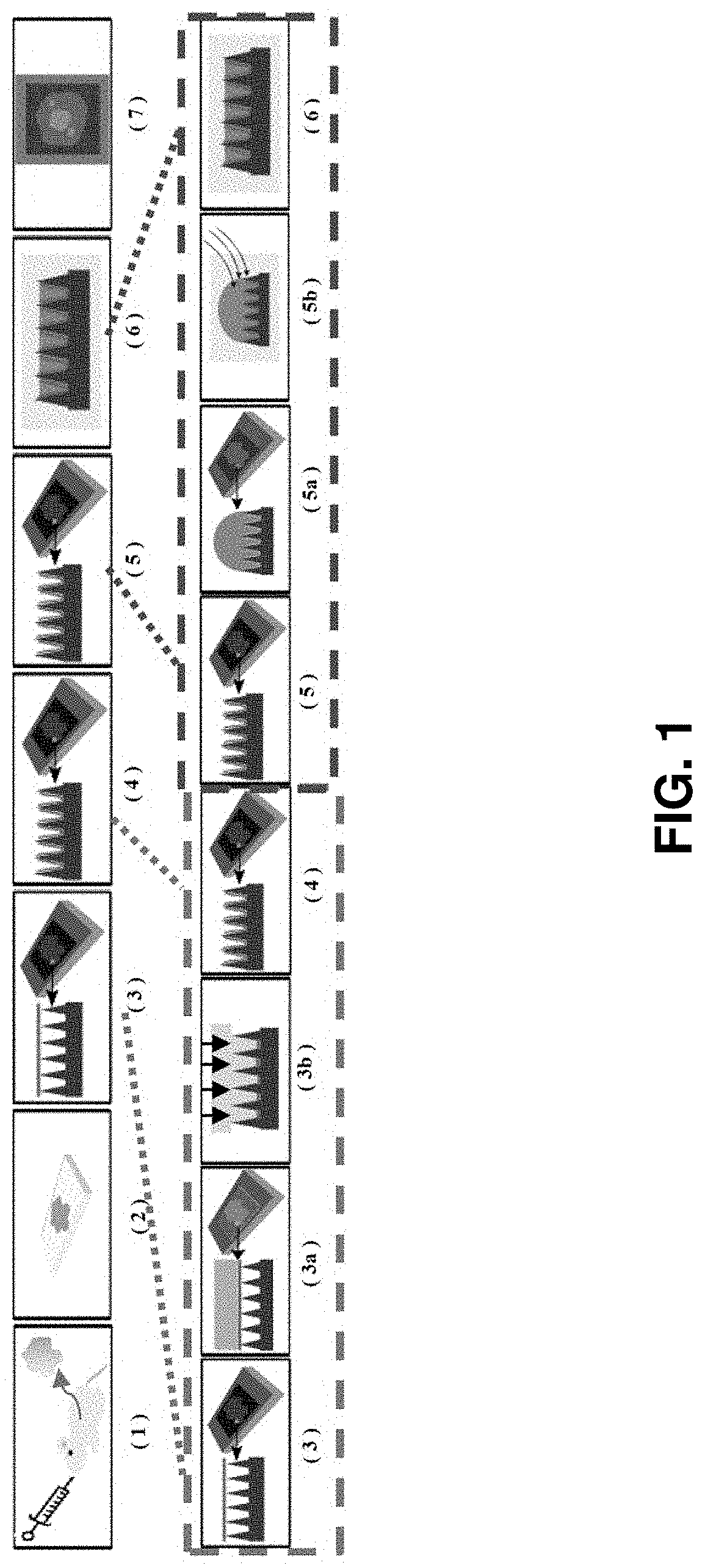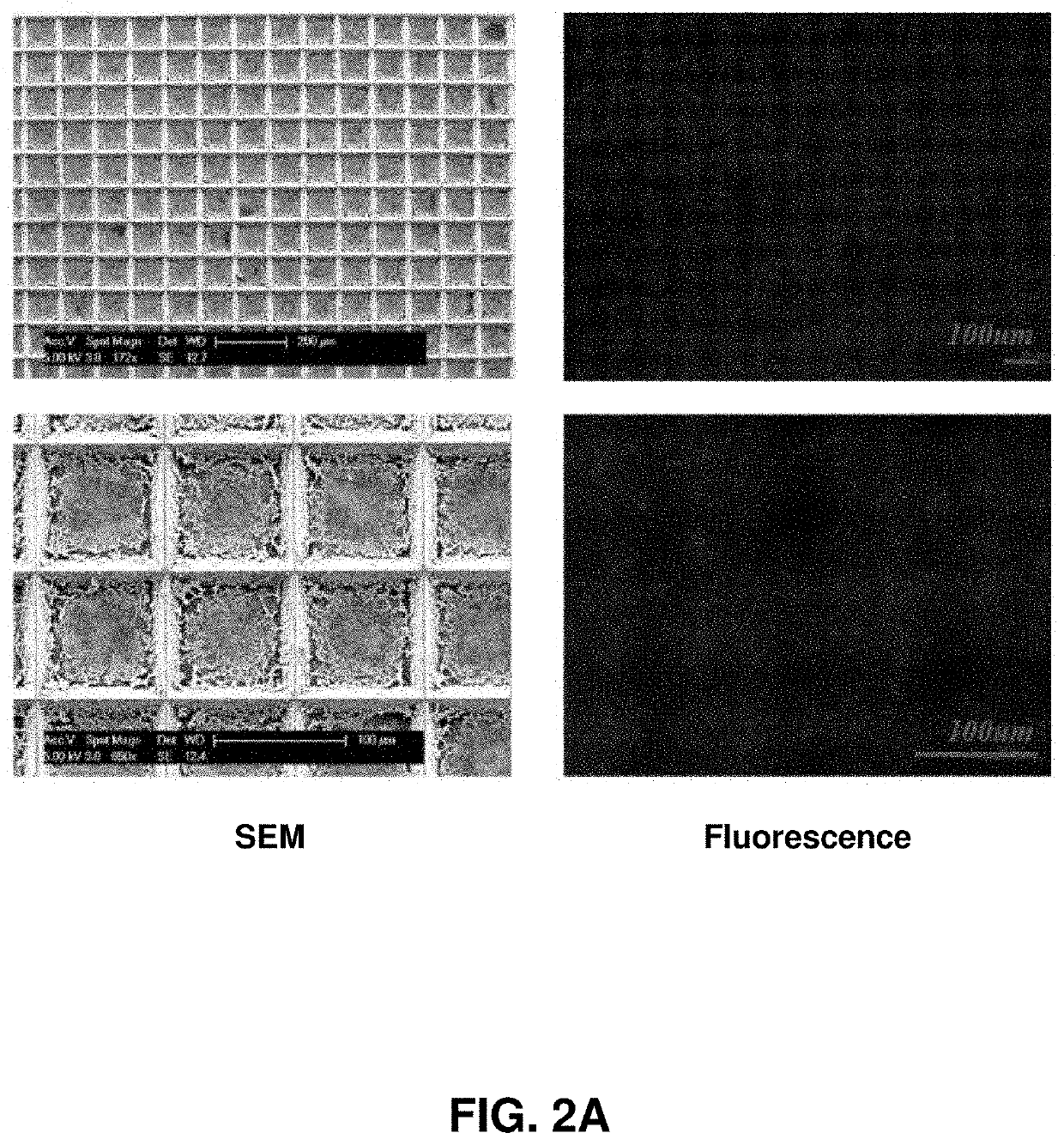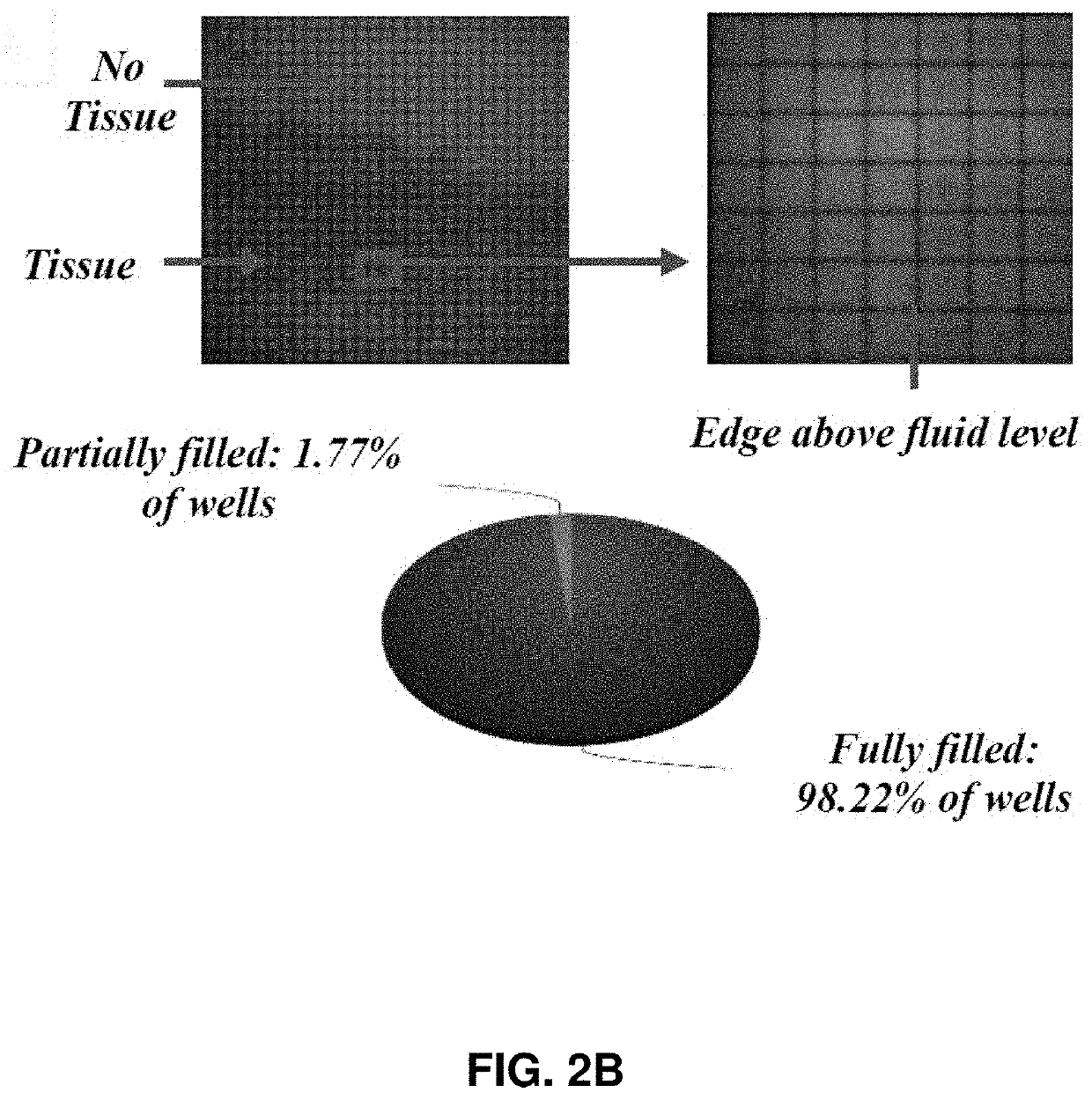Spatial molecular analysis of tissue
a tissue and molecular analysis technology, applied in the field of spatial molecular analysis of tissue, can solve the problems of inability to maintain spatial information, low throughput and laborious constraints, and achieve the effect of avoiding cross-talk, significant functional benefits, and reliable and efficient tissue molecular analysis
- Summary
- Abstract
- Description
- Claims
- Application Information
AI Technical Summary
Benefits of technology
Problems solved by technology
Method used
Image
Examples
example 1
[0090]Described herein is an on-chip spatial gene expression analysis technique that can perform real-time nucleic acid amplification, including reverse transcriptase loop mediated isothermal amplification (RT-LAMP) starting from tissue samples, while keeping the native spatial location of the nucleic acid preserved. We engineered a silicon oxide chip with an array of microwells that serve as independent picoliter volume RT-LAMP reaction vessels. The wells were designed to have knife-like sharp edges (referred herein as a “shearing surface”) that help in tissue partitioning-and-transfer into wells starting from a tissue cryosection. A capillary action based reagent loading technique was developed to fill all the wells on the chip simultaneously while preventing reagent overflow between wells in the final loaded chip. Using this platform we amplified the TOP2A mRNA starting from a 7 micron tissue section of a prostate cancer xenograft and visualized the vari...
example 2
Spatial Gene Expression Analysis from Tissue
[0110]Described herein is a rapid technique that performs on-chip picoliter real-time reverse transcriptase loop mediated isothermal amplification (RT-LAMP) reactions on a histological tissue section without any analyte purification while maintaining the native spatial location of the nucleic acid molecules. This example includes a method of amplifying TOP2A messenger RNA (mRNA) in a prostate cancer xenograft with 100 μm spatial resolution and by visualizing the variation in threshold times across the tissue. The on-chip reaction was validated through fluorescence mRNA in situ hybridization (ISH). The entire process, from tissue loading on microchip to results from RT-LAMP can be carried out in less than two hours. This technique with its ease of use, fast turnaround, and quantitative outputs is an invaluable tissue analysis tool for researchers and clinicians in the biomedical arena.
[0111]The spatial localization of gene expression can un...
example 3
r Generating a Pixelized Tissue Sample
[0189]In an embodiment, described herein is a device for pixelating a tissue sample. An exemplary device is provided in FIGS. 22A-K and 31A-B. The device includes a plurality of wells 100 supported by or embedded in a substrate 110 for receiving a tissue sample, including a cryogenic histogram. A shearing surface 120 positioned between the wells has a sharp edge to sever a tissue sample 120 when force is applied to it. A deformable substrate 140 configured to fit over the plurality of wells 100 and placed on top of the tissue sample may be used to force tissue sample into the wells and ensure the tissue sample 130 is severed such that a portion (e.g., “island”) enters each of the plurality of wells 100. When force, such as that provided by a centrifuge, is applied, as indicated by the arrow in FIG. 31B, the tissue sample severs such that a portion is forced into each of the wells generating a tissue sample island 150 in each well and thereby cre...
PUM
 Login to View More
Login to View More Abstract
Description
Claims
Application Information
 Login to View More
Login to View More - R&D
- Intellectual Property
- Life Sciences
- Materials
- Tech Scout
- Unparalleled Data Quality
- Higher Quality Content
- 60% Fewer Hallucinations
Browse by: Latest US Patents, China's latest patents, Technical Efficacy Thesaurus, Application Domain, Technology Topic, Popular Technical Reports.
© 2025 PatSnap. All rights reserved.Legal|Privacy policy|Modern Slavery Act Transparency Statement|Sitemap|About US| Contact US: help@patsnap.com



